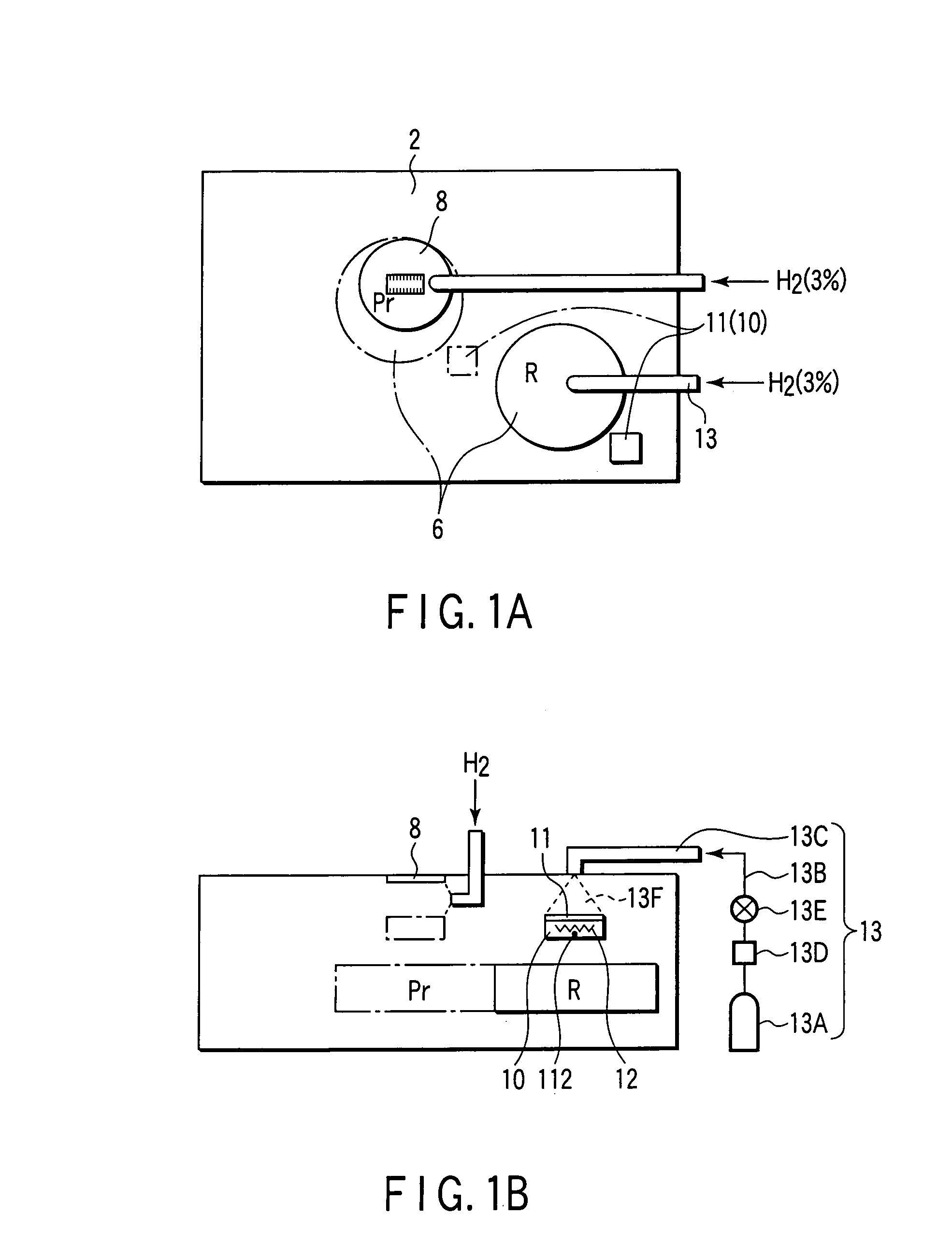Probe pins zero-point detecting method, and prober
a probe pin and zero-point detection technology, applied in semiconductor/solid-state device testing/measurement, fault location by increasing destruction at fault, etc., can solve the problem of difficulty in bringing wafer w and probe pins b>8/b>a into contact at high accuracy, needle pressure for testing may damage the electrode pad and its underlying layer, and gold wafer cannot meet such a demand for a lower needle pressur
- Summary
- Abstract
- Description
- Claims
- Application Information
AI Technical Summary
Benefits of technology
Problems solved by technology
Method used
Image
Examples
first embodiment
[0048]The characteristic features of the present invention will now be mainly described on the basis of the first embodiment shown in FIGS. 1A to 5B by denoting the same or corresponding portions as in the prior art with the same reference numerals.
[0049]A prober of this embodiment is formed in the same manner as that of a conventional prober except that it has a zero-point detection plate 11 and a reducing mechanism (12, 13) in a prober chamber 2 as shown in, e.g., FIGS. 1A, 1B, and 2. More specifically, the prober chamber 2 has a stage 6 which places a wafer W thereon and moves in the horizontal and vertical directions, a moving mechanism 7 and rotary mechanism 6B which move the stage 6 in the X, Y, and Z directions and in a θ direction, respectively, and a probe card 8 which is arranged above the stage 6 and has a plurality of probe pins 8A. In the prober chamber 2, the probe pins 8A are brought into contact with electrodes P (FIG. 5A) of an object W′ to be tested (e.g., device) ...
second embodiment
[0063]the present invention will be described. According to this embodiment, as shown in FIGS. 4A and 4B, a copper wafer having a surface made of copper can be used as a zero-point detection plate 11A. The zero-point detection plate 11A can be stored in a storing portion 1A (FIG. 8A) in a loader chamber 1. When a stage 6 has a heating mechanism for high-temperature testing of a wafer W, the heating mechanism can be used as a heating mechanism for reducing the copper wafer. As a gas supply mechanism 13, a type which is arranged in a prober chamber 2 in the same manner as in the above embodiment can be used.
[0064]A zero point detecting method according to the second embodiment will be described. The zero-point detection plate 11A is extracted from the loader chamber and placed on the stage 6 in the prober chamber. The zero-point detection plate 11A may be heated by an electroresistive heating mechanism 12A of the stage 6 to a temperature that can reduce copper oxide. The stage 6 moves...
fourth embodiment
[0068]The fourth embodiment will be described. According to this embodiment, a storing portion 1A which stores a zero-point detection plate is arranged in a loader chamber, as shown in FIG. 8A. As a zero-point detection plate 11A, the copper wafer shown in FIG. 4A can be employed.
[0069]As shown in FIG. 8B, an electroresistive heating mechanism 12A to heat the zero-point detection plate 11A can be arranged in the loader chamber (e.g., in a storing portion 1A). Similarly, the heating mechanism can be a lamp 12B, as shown in FIG. BC.
[0070]A reducing gas supply mechanism 13 can be arranged in the storing portion 1A.
[0071]When the heating mechanism and reducing gas supply mechanism are to be arranged in the storing portion 1A, the copper wafer is heated and blown with a reducing gas in the storing portion 1A, as shown in FIG. 8A, so that the copper oxide surface on the copper wafer is reduced to form reduced copper. The copper wafer in this state is transported from a loader chamber 1 to...
PUM
 Login to View More
Login to View More Abstract
Description
Claims
Application Information
 Login to View More
Login to View More - R&D
- Intellectual Property
- Life Sciences
- Materials
- Tech Scout
- Unparalleled Data Quality
- Higher Quality Content
- 60% Fewer Hallucinations
Browse by: Latest US Patents, China's latest patents, Technical Efficacy Thesaurus, Application Domain, Technology Topic, Popular Technical Reports.
© 2025 PatSnap. All rights reserved.Legal|Privacy policy|Modern Slavery Act Transparency Statement|Sitemap|About US| Contact US: help@patsnap.com



